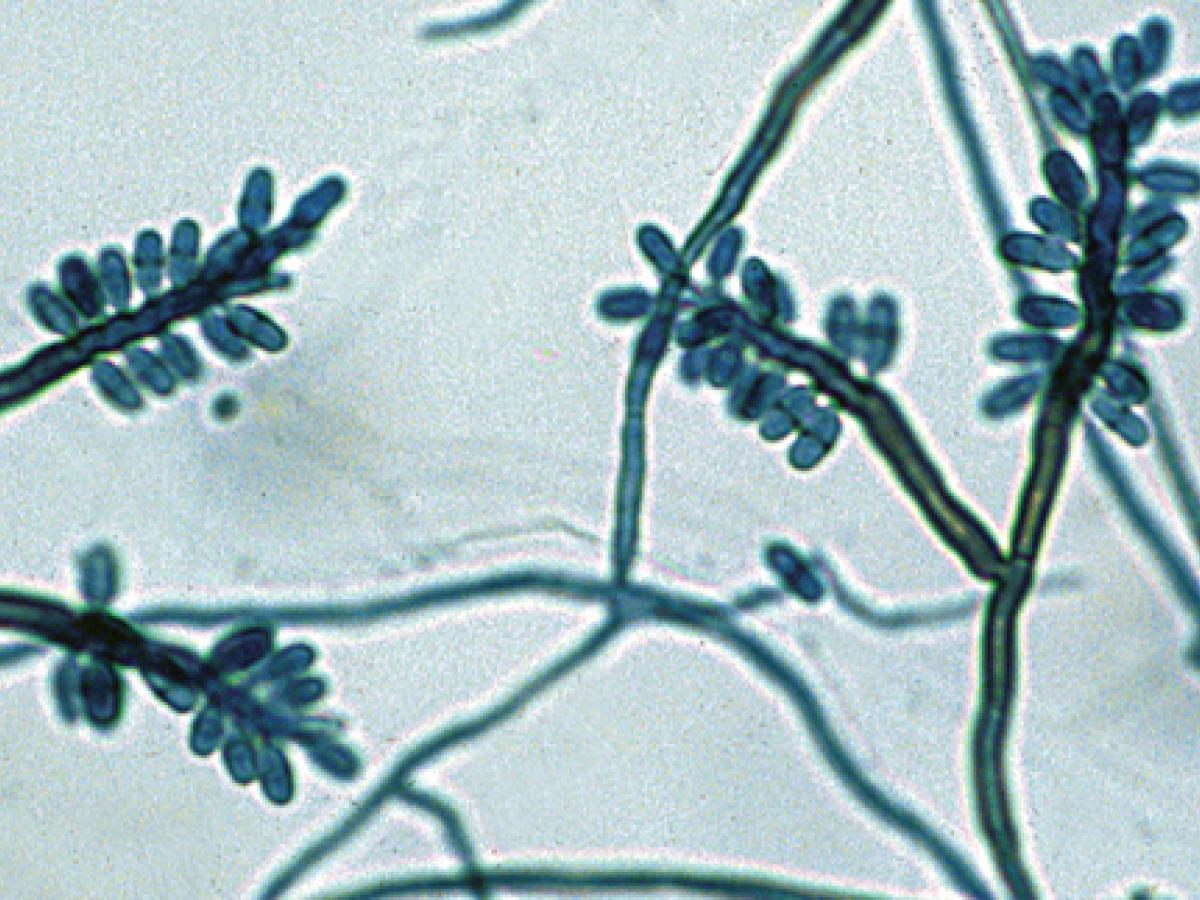Veronaea botryosa
This genus is very similar to Rhinocladiella, however the conidia are typically two-celled. Occasional skin infections have been reported from humans (Revankar and Sutton 2010).
RG-2 organism

Conidiophores and conidia of Veronaea botryosa.
Morphological description:
Colonies grow rapidly and are suede-like to downy, greyish-brown to blackish-brown. Conidiophores are erect, straight or flexuose, occasionally branched and are usually geniculate, due to the sympodial development of the conidia. They are smooth-walled, pale to medium olivaceous-brown, up to 250 µm long and 2-4 µm wide. Conidia are pale brown, two-celled, cylindrical with a truncated base, smooth-walled or slightly verrucose, 5-12 x 3-4 µm.
Molecular identification:
Arzanlou et al. (2007) used D1/D2 and ITS sequence data in a phylogenetic revision.
References:
Ellis (1971), de Hoog et al. (2000, 2015), Revankar and Sutton (2010).
| No | ≤0.016 | 0.03 | 0.06 | 0.125 | 0.25 | 0.5 | 1 | 2 | 4 | ≥8 | |
|---|---|---|---|---|---|---|---|---|---|---|---|
| AmB | 2 | 2 | |||||||||
| VORI | 2 | 2 | |||||||||
| POSA | 2 | 1 | 1 | ||||||||
| ITRA | 2 | 1 | 1 |
